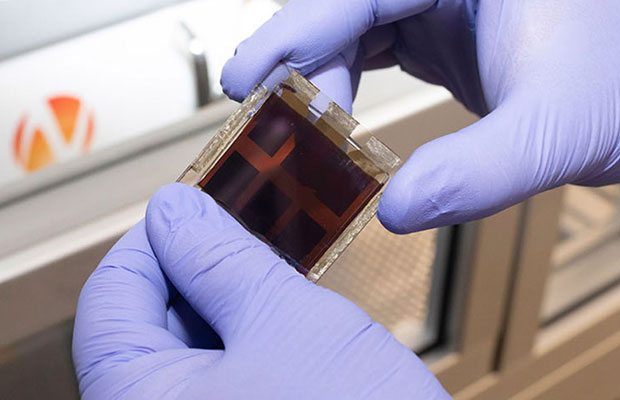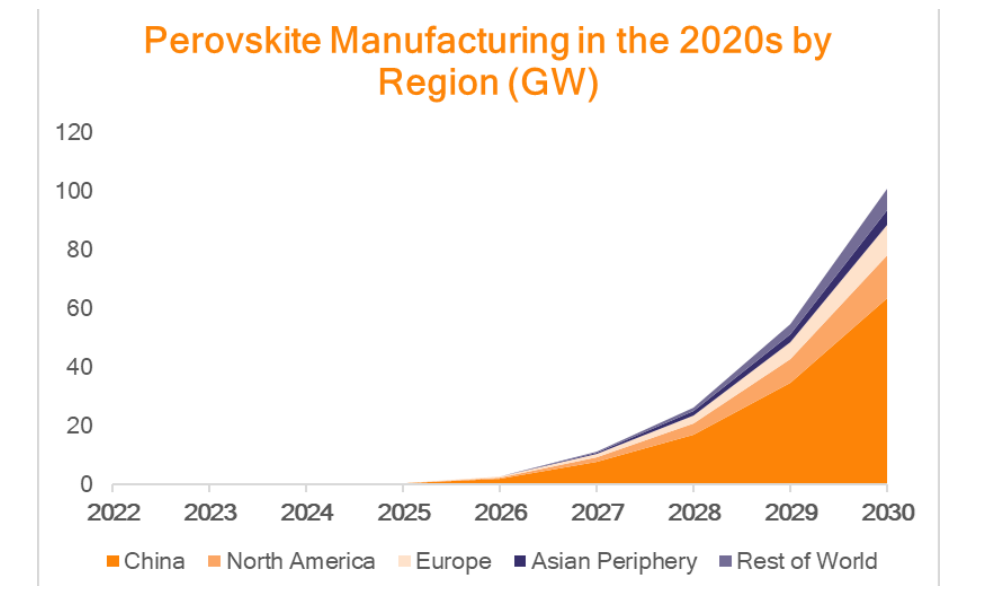Highlights :
- The first 100 MW pilot lines, both the four operational and the several others soon to be commissioned, will run at low utilization rates for the next year or two at least.
 Global Perovskite Manufacturing Output Will Pass 2 GW Mark in 2026: Rethink Energy
Global Perovskite Manufacturing Output Will Pass 2 GW Mark in 2026: Rethink Energy Rethink Energy has released its latest report on Perovskites in photo voltaic systems, reflecting on how every indicator – manufacturing activity, equipment supply and successful pilots- indicating significant ramp in installed Perovskite systems from 2026 onwards, taking over the industry inside another decade.

Perovskite manufacturing Report
Future Estimates
The report expects that global perovskite manufacturing output will pass the 2 GW mark in 2026, then 10 GW in 2027 and 100 GW in 2030. By 2040, over 90% of solar manufacturing will be perovskites in one form or another, which will involve 1,040 GW manufacturing from 1,615 GW of production capacity.
The report further adds that Perovskite photovoltaics are on the cusp of commercialization, with firms (Microquanta, GCL
System Integration, and Utmolight), having commissioned 100 MW pilot lines.
Investment in Perskovite
In the West, Oxford PV spent years saying it would commission its 100 MW pilot line “next year” – now it actually has.
The products coming from these production lines are higher efficiency than ever, and crucially this includes at the full scale of cells and modules, not just test cells. They are racking up long lifespan ratings, with some already verified according to international standards (Microquanta’s α module obtained IEC61215 and IEC61730 in April), and the very first modules have even been shipped on a very small scale.
First Solar and GCL System Integration have respectively acquired and established perovskite subsidiaries, LONGi has been posting world record results for heterojunction-perovskite tandem cells, and Q Cells has announced a $102 million production line investment, among other moves from big players. This year investment into perovskites will come to at least a billion dollars.
The first 100 MW pilot lines, both the four operational and the several others soon to be commissioned, will run at low utilization rates for the next year or two at least. They are still busy producing test batches, each different from the last. But they are a physical proof of progress, as are the five pilot installations built by Microquanta across China (of which the latest was 260 kW in scale). A couple of companies, including Utmolight which is one of the leaders, have mooted GW scale facilities, which they claim will soon begin construction. Besides mainstream involvement, pilot lines and pilot projects, the third proof that perovskites will soon enter the market is the state of the technology itself.
Headwinds
The study says that short and medium-term projections for perovskite manufacturing output are based on the manufacturing scale announced by these dozens of companies, with the understanding that many will be later than their claimed dates of commissioning, some may not get built, and all will initially be stuck making trial batches for at least a year or so. On the other side of the story, it also points that every month brings a new perovskite company or two to the scene, and all of the major silicon manufacturers will enter perovskite manufacturing ahead of 2030.
Perovskite holds immense potential to be an alternative to silicon based solar cell, given the low cost fabrication and high device efficiency. Yet there are challenges holding back the progress, which has been snail-paced.
To begin with, perovskite employs toxic lead is a major concern for the environment. At the same time, long term stability of perovskite solar cells is another challenge as they are extremely moisture-sensitive in ambient air, which can lead to material degradation, affecting the photovoltaic property.
That hasn’t stopped researchers from promising huge gains from perovskite, as we covered in this article back in 2021.






























